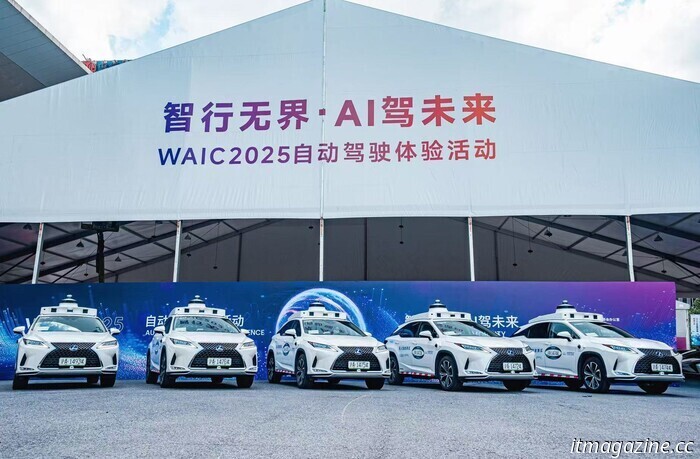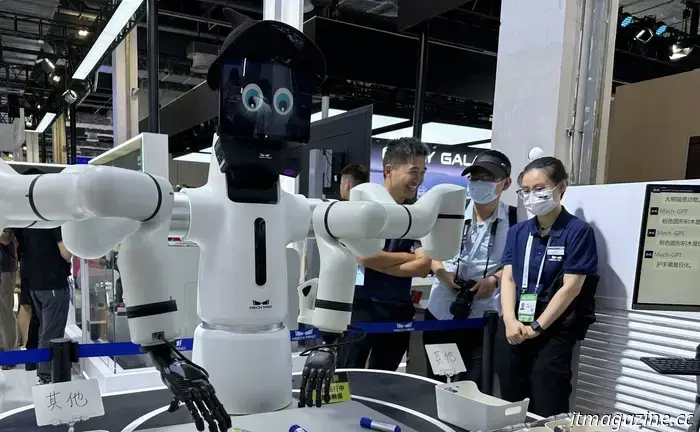
China approves autonomous ride-hailing services in all first-tier cities | WAIC 2025
Pony.ai showcased its robotaxis at the World Artificial Intelligence Conference (WAIC) in Shanghai on July 26, 2025.
Chinese technology giant Baidu and the self-driving car startup Pony.ai have received authorization to provide their fully autonomous ride-hailing services and charge for robotaxi rides in approximately 300 square miles of downtown Shanghai, where Tesla has also aimed to introduce its robotaxis. “This means our robotaxis are now available for commercial services in the city with the highest GDP in China,” Pony.ai’s founder and chief technology officer, Lou Tiancheng, stated to TechNode during the WAIC in Shanghai. “We now hold permits for charging fares for robotaxis in all four top-tier cities in China: Beijing, Shanghai, Guangzhou, and Shenzhen,” Lou added.
Shanghai, home to Tesla’s China Gigafactory and the headquarters of Volkswagen’s partner SAIC, is set to catch up with other major cities in the country regarding robotaxi adoption, as China has emerged as a global leader in both autonomous and electric vehicles over the last decade. The city is allowing robotaxi operations in the Huamu, Zhangjiang, and Shibo sub-districts, covering an area of 759 square kilometers (293 square miles) of the Pudong New Area, as announced by regulators during this year's WAIC.
At this point, the city’s authorities revealed plans to enable self-driving car companies to gradually increase their operational areas to encompass the entire Pudong New Area and parts of the Minhang and Fengxian districts by 2027. This would extend their operations to an area of 2,000 square kilometers (772 square miles) and facilitate over 6 million autonomous rides by that time, according to a government official from the Shanghai Municipal Commission of Economy and Information Technology.
Baidu and Pony.ai will begin limited operations of their fully autonomous services across the 759 square kilometers (293 square miles) of the Shanghai Pudong New Area, which is recognized as the city’s financial hub. Although the companies did not disclose comprehensive details about their plans, including the number of robotaxi units available and the costs, the regulator confirmed that residents currently have access to approximately 100 robotaxis, with plans to increase that number significantly to 500 by the end of the year. A human driver will remain in the passenger seat to monitor the vehicle as required.
Both Chinese and US regulators are progressing more rapidly than the current readiness of self-driving car technology because they are aware of the industry's dynamics, according to Lou. Local governments in China have been taking a phased approach to gradually enhance availability while ensuring the safety of autonomous vehicles (AVs), utilizing strategies such as issuing various permits to manage the testing and introduction of AVs.
A fully driverless Lexus RX450h SUV, created by Pony.ai, transported passengers during the WAIC in Shanghai on July 26, 2025. Pony.ai first obtained permission from Shanghai to test self-driving cars with a safety driver in the suburbs in mid-2020. However, it has only recently been granted authorization to launch a paid, fully autonomous driverless car service. The company initiated China’s first commercial robotaxi service in mid-2022 in Guangzhou, followed by similar operations in Beijing and Shenzhen in late 2023 and early 2024, respectively.
Lou expressed confidence that Pony.ai could compete with Alphabet’s Waymo in international markets, aligning with other companies, including Baidu and Momenta, in partnerships with Uber for robotaxi deployments. Waymo is recognized as the leading robotaxi operator globally, having reported 10 million trips using over 1,500 robotaxis across several major US cities, with its fleet completing more than 250,000 paid rides weekly.
Tesla's anticipated robotaxi service, initially featuring 10 Model Y crossovers, commenced on June 22 in a 42-square-mile area of Austin, Texas. The US automaker highlighted its robotaxi launch in a video at its WAIC 2025 showcase on the first day of the event. The company now plans to implement its Full Self-Driving (FSD) advanced driver assistance system in China and Europe by the year's end, according to Shanghai Observer, though this initiative has been delayed a few months from its original schedule.
Baidu reported that it had provided 11 million rides as of May and uses over 1,000 fully driverless vehicles across 15 cities globally. The Guangzhou-based and Nasdaq-listed Pony.ai aims to grow its autonomous ride-hailing fleet from nearly 300 vehicles to 1,000 by year-end, achieving an average of 15 rides per day per vehicle, as disclosed in its October prospectus.
READ MORE: China’s Waymo competitor Pony.ai reduces self-driving stack costs by 70%.
Jill Shen is a technology reporter based in Shanghai, focusing on Chinese mobility, autonomous vehicles, and electric cars. You can reach her via email at [email protected] or follow her on Twitter




China approves autonomous ride-hailing services in all first-tier cities | WAIC 2025
“Our robotaxis are now offering commercial services in China’s largest city by GDP,” stated Pony.ai CTO Lou Tiancheng.

